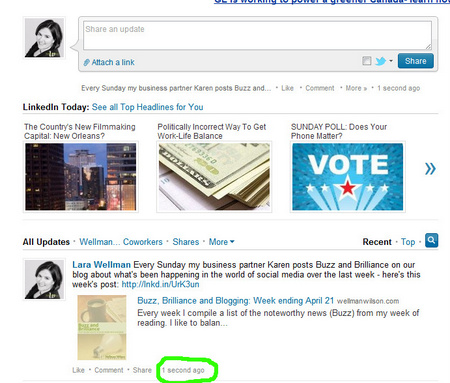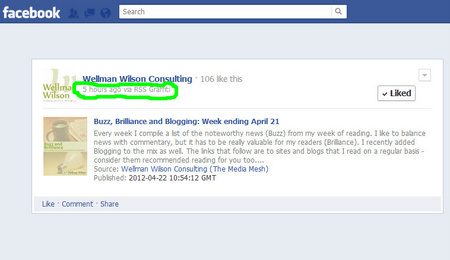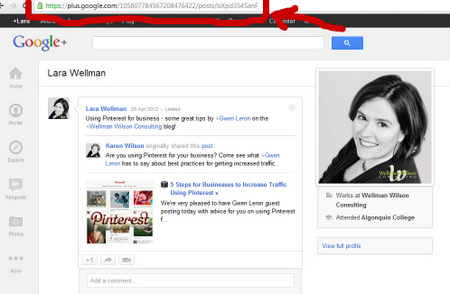 This picture may seem funny, but this genuinely happens more often than I like to admit.Every once in a while, I get asked how I find so much good content to use for reference - particularly because of the weekly post I do here on The Media Mesh summarizing the week’s top news and general brilliance. What I do with the Buzz and Brilliance is content curation.
This picture may seem funny, but this genuinely happens more often than I like to admit.Every once in a while, I get asked how I find so much good content to use for reference - particularly because of the weekly post I do here on The Media Mesh summarizing the week’s top news and general brilliance. What I do with the Buzz and Brilliance is content curation.
What is content curation?
This definition from econtentmag.com sums it up well:
Content Curation is the act of discovering, gathering, and presenting digital content that surrounds specific subject matter.
We’re all content curators. Check out your Twitter, Facebook, Google+, Pinterest and Blog feeds if you don’t believe me. (You DO share stuff that isn’t your own, correct?)
Today on Twitter, @PamInOttawa asked:
I started by throwing out a couple of ideas that came to mind - Alltop and Facebook Interest Lists. But Pam came back at me and asked what my process is, which isn’t easy to explain in 140 characters, so I said I’d write a blog post. I don’t use Alltop, though I think it’s a really interesting tool (and seeing it again today has piqued my interest). I haven’t really jumped into using interest lists much, though they show up in my Facebook newsfeed and I really like the idea of them, too.
RSS is Alive and Well
My process is far more basic and lives mostly in Google Reader. I keep hearing that RSS is dead, but I rely on mine to keep up with reading all 161 blogs I’m subscribed to. Within Google Reader, I’ve set up folders by subject, from General topics where things like Lifehacker reside to Social Media where I get my SM fix every day. I also read blogs about blogging, business, technology, photography, web design, SEO and my free-time fun blogs are the ones that are about everyday life. I try to read through the unread posts daily so it doesn’t get too overwhelming, but in a pinch, I can weed through well over 1,000 in an hour or two.
How do you find blogs to follow?
When I first started subscribing to blogs, I subscribed to a few big names first. Then I checked out their blog rolls and subscribed to everyone they listed. I visited each of those blogs and checked out their blog rolls if they had them, though I did get pickier about who and what I chose to follow. I wanted a good mix of news stories, commentary and general business insight. I’ve achieved that balance to my satisfaction, though I’m constantly tweaking what I read - subscribing to new content and unsubscribing blogs that I’m not getting as much from. Chris Penn once wrote about finding five new blogs to subscribe to every month and I’ve been doing just that ever since. I even subscribe to more than five occasionally.
I find new blogs and content from Twitter. When I see one that’s really good, I’ll favorite the tweet or clip the article to Evernote. How I decide depends on how I want to use that content. Sometimes I want it for reference - that always goes to Evernote, in the applicable notebook with tags to help me find it later. I clip stuff all the time because it’s triggered a blog post idea. It sits in my Evernote until the idea fizzles out or I get around to writing it up. I have dozens of post ideas and the list keeps growing.
If something catches my eye on Twitter when I’m short on time, I will favorite the tweet. I have If This Then That set up to send all of these tweets to Evernote as well. Twitter Favorites are a bookmarking tool for me that can mean anything from idle curiosity when I have no time to genuine interest with intent to act.
What do you do with all that content?
At the end of each week, I take all the posts I’ve starred in Google Reader and sort them. A handful go into the Buzz and Brilliance. A handful I’ve starred to go back and comment, Stumble or Pin. A handful I star to clip to Evernote. A handful get tagged into topics I collect right in Google Reader for reference later. Anything that’s leftover after I’ve finished those tasks gets unstarred and I’m reset for the next week of reading.
It’s an involved process, but I’m learning so much every single week and part of the learning is streamlining the overall process as I go. The Buzz and Brilliance now takes me half the time it did when I started it, but I can get through more content now. It’s all about learning to spot the good stuff quickly and efficiently.
Most of all - be nosey and ask these questions when you want to find more content:
- Who do the people you respect follow?
- Who are the experts in your field of interest learning from?
- What blogs and websites do they quote or link to regularly?
The beauty of social media is that you don’t even need to ask. You can just observe and get the answers.
What tools do you use to curate content or generate ideas for content?
 Photos in a blog post make your post more readable by:
Photos in a blog post make your post more readable by:









